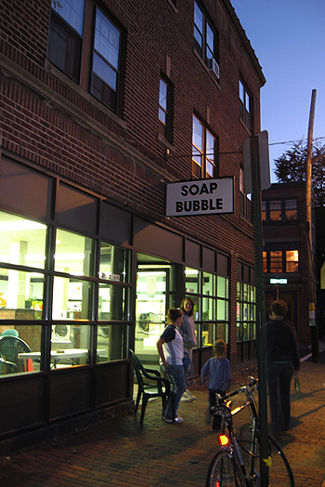
"God is the country of the spirit,
and each of us is given a little holding
of ground in that country;
it is our duty
to explore that holding to gain certain impressions
by such exploring,
to stabilise as laws
the most valuable of these
impressions, and,
as far as we can,
to abide by them.
It is our duty to criticise,
for criticism is
the personal explanation
of appreciation."
~ Dylan Thomas, from a letter to Pamela Hansford Johnson

“every one that thirsteth, come ye to the waters”
~ Isaiah 55:1
Having journeyed long enough from shores no longer distinguishable, save for their impressions, now it is possible to notice nuanced changes in light and air current. The new season calls for yet another divergence along the broadening course I navigate. Emerson wrote, "the voyage of the best ship is a zigzag line of a hundred tacks," reminding me that even after steering through turbulence, the prospect of numerous turns under clear skies really is an appreciation of the finest course. A tidal reconciliation is surely more habitable than tireless resistance. And so the journey unfolds still further. And in this stretch, there seems less need to focus upon my own development. Momentum from pronounced personal sea-changes bring us to points beyond discoveries of essentials, and on to an expansive freedom to give myself more thoroughly to my relationships. The subtle change is one of emphasis, and just as the ancient Psalmist prayed to be upheld evermore with a willing spirit, such yearnings come from the place between restoration from anguish and having already reached a strengthened stride.
Our society's obsessive penchant for preparedness, the worst of which is really connected to fear of the unknown and securing what is already overfortified, makes readiness into an end rather than a means. And at the same time, we ironically revere such expressions as "life is not a rehearsal." But in the balance of things, so as not to let planning obstruct living, we can surely apply what we learn in the miraculous process of comprehension. I like to recall listening to a monk tell me, "what little you can understand of the gospel- live it." This perspective launches theory into practice, and so often learning and application occur simultaneously- even with the "order" reversed. Newly-learned discoveries follow actions, as well as vice-versa. Understanding the vitality of compassion, toward oneself and outwardly, the vast Atlantic reminds me of the vocation of embracing the lives of those around us, and finding our place in lives that parallel ours.
The nature of transformation itself is fluid and dynamic, yet it is forgivably natural to want to preserve that spirit. How is this possible, each day being distinct from the one preceding it? In photography, rather than to preserve a process we refine how it works. What is developed and affixed are images that are tangible. Thus far, I have seen that in the maintenance of a willing spirit, my own transformation continues. It doesn’t happen every day, at least not overtly, but a humble spirit that longs to be led by streams of living water is never far from reach. It is always both figurative and metaphorical, for me to go to the ocean; constantly in motion yet always present and steadfast. In a fascinating triumvirate: the biblical Jeremiah, enduring the tragedy of war, looked to God as the fount of living water; many centuries later John pointed to God as the giver of living water to souls that thirst; and finally John encourages holding on to faith, as that will inspire humans to become conduits of the life-giving Source. The water’s edge continues to remind me of light, the scent of sea air, and the infinite textures of this environment. Even how things taste. And what I thought to be daunting matters regain their realistic scale.














